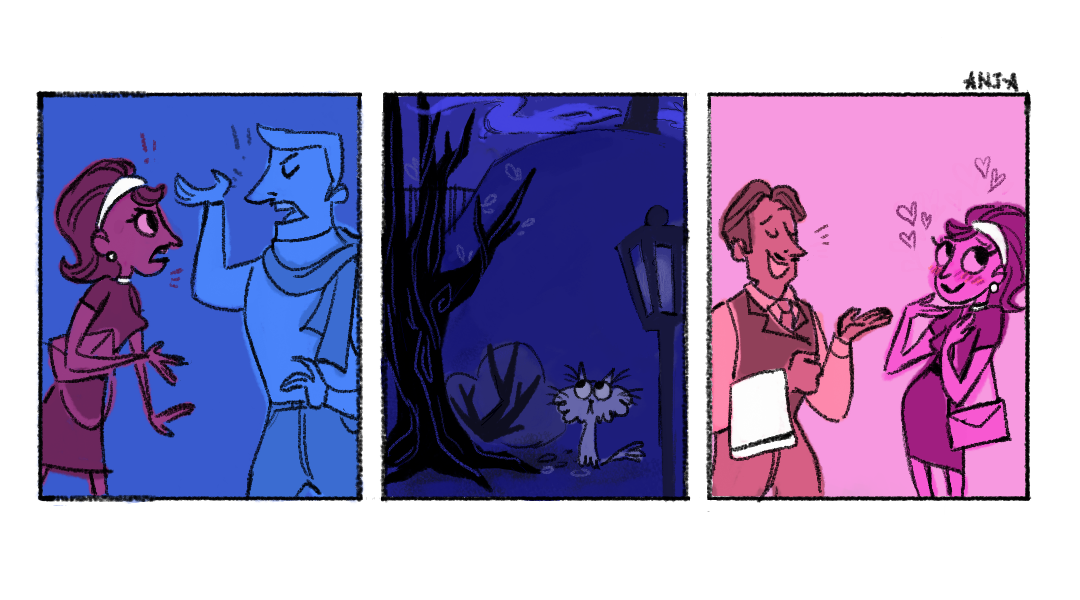When a story takes on another life...
Ten years ago - TEN YEARS AGO! - I had a short story, Instructions for Reading This Story, published in the wonderful Defenestration Magazine. It was so much fun to write, but I must admit I had slightly forgotten about it until I got a message through my website from Miroslava who teaches English as a foreign language.
She'd used my story in her class, she wrote. Would I be interested in seeing some of the comments the students had made?
Yes, I would.
So here's my story... and afterwards you'll see some of the photographs Miroslava took of the work that came out of reading it in class. THANK YOU SO MUCH. It's always exciting to see how other people interpret your words.
Instructions for Reading This Story
by Sarah Salway
1. Do not assume that just because the story ends with the man and the woman not living happily ever after that the author has problems in her own relationships.
2. A cat can sometimes be just a cat. It is not necessarily a metaphor for death, or motherhood, or even Derrida’s theory of Difference. Perhaps a cat was sitting on the author’s desk and the author thought it would be nice to put it in the story because the cat was old and may not be alive when the story was published. On second thoughts, sometimes a cat can be a metaphor for death. But do not make the mistake of assuming you are clever.
3. Likewise the spelling mistake in line seven of the third paragraph on page two may just be a typo that by-passed the author, editor and copy-editor. It is kinder to ignore it rather than suggest students include it in their essays as deliberate faux-beginnerism. And especially not as an example of sloppy editing. In fact, don’t teach this story at all. But if you do, do not send the author your student’s comments. Unless, of course, they are very positive. And then send them straight away.
4. Please look at the name of the author carefully. Remember it. This person spent many hours chained to her desk when she would rather be out walking in the woods just so you could be entertained. So if you should ever meet her, you do not need to ask if she has ever published anything. This may be upsetting for her, especially if it has been a long time and she has just been dropped by her publishing house. But if you should forget, and you do ask her, never then request the name she writes under. It will be her own. You will just not have remembered it.
5. But if, by some miracle, you do remember the author’s name and you also remember she wrote this story, do not talk about that lovely cat – the so-called death metaphor, and how clever it must have been to be able to turn on the kitchen tap and drink from it. Or how sweet it was when it would lie on the one from bottom step just so it could catch the comings and goings of the household. She may still be feeling raw about its death.
6. OK, it probably is safe to assume that when the husband in the story is pushed in front of the on-coming car and the wife just stands by and laughs, that may be a small clue that the author’s marriage has not been a success. However, do not assume that the author is a man hater (see point 9).
7. Or that the fictional husband had a rough deal. He really did not. You remember that paragraph about how he’d smell his food before he ate it, and also the one when he comments in public about the size of his wife’s thighs. Think whether you could get that level of detail in prose without there being some element of truth involved.
8. When the woman throws herself on the bathroom floor and weeps, feel free to notice for a moment the carefully chosen colours of the expensive Italian tiles, the smell of the English lavender soap she inhales, and how clean that floor must have been for her to feel comfortable about lying there for so long. And then cry with her. Do not smile, or wish you could slap her face and tell her how the middle classes have no problems really, or skip to the next paragraph to see how the husband is doing in hospital.
9. That moment when the hot young Italian waiter tells the woman she is too beautiful to weep for a dead husband does NOT come too soon after the husband’s eventual demise. In fact, if anything, it has been years in the planning, involving many many nights of imagining.
10. The woman in this story does not necessarily have a problem with control. Nor is she a hard-hearted money pinching bitch. She may just find it hard to express her feelings. She is relying on readers to pick up her sensitivity through the old creative writing adage – show not tell. Look how much she does for her husband; even arranging a sudden death for him. Which is surely what all of us desire, and more than most of us achieve. Remember the cat. On second thoughts, do not mention the cat.
And from Miroslava's class...





